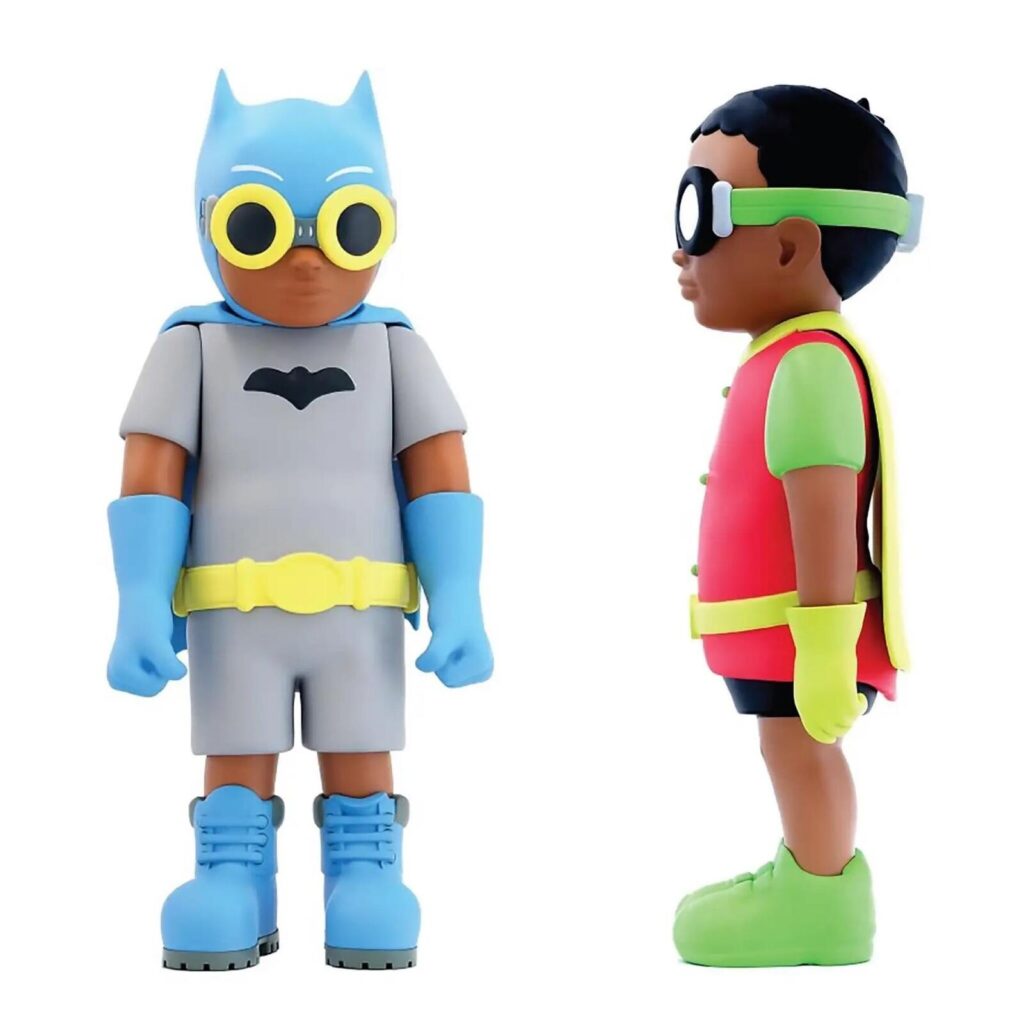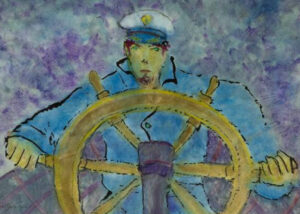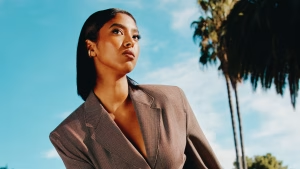In the layered visual vocabulary of Hebru Brantley, mythology is not fixed in the past—it is a living, breathing, remixable code of symbols. With his 2022 painted cast vinyl piece Flynamic Duo 66’, Brantley doesn’t merely offer another collectible figure for the pop-art pantheon. He delivers a bold revisionist myth—an intervention in American superhero lore that re-centers Black identity, imagination, and belonging within cultural iconography too long monopolized by whiteness.
On the surface, Flynamic Duo 66’ is a playful reinterpretation of Batman and Robin, the eternally recognizable crime-fighting duo first emblazoned across American comic books in 1940 and immortalized through decades of television and cinematic renditions. But Brantley’s version—a sculptural reinterpretation cast in vinyl and painted with loving precision—goes far beyond homage. These are not just characters dressed in new skin; they are avatars of a re-authored American mythology, proudly wearing the symbols of Black resilience, boyhood, and futurism.
The Inversion of Archetype
Brantley’s duo stands in sharp defiance of traditional narratives. Dressed in capes, boots, and utility belts, they retain the silhouettes of their DC Comics counterparts but are rendered unmistakably with the characteristics of Brantley’s most iconic figures: Flyboy and Lil Mama. Where Bruce Wayne is the orphaned white billionaire, Flyboy is a vessel for a different kind of power—an emblem of survival and imagination born not from privilege but from the struggle to dream in environments designed to erase.
This reconfiguration places Black youth at the pithy of the hero’s journey, replacing Gotham’s gothic towers with inner-city rooftops, subways, and fractured neighborhoods. The transformation of Flyboy and Lil Mama into Brantley’s take on Batman and Robin is more than aesthetic—it is conceptual. It answers a question long evaded in the comic book industry: what does heroism look like when decoupled from whiteness?
Flynamic Duo 66’ asserts that heroism is not found in inherited wealth or secret lairs. It’s found in the ability to persist, to protect, and to create joy in spite of societal constraints. In Brantley’s reimagining, the mask is not a disguise—it’s a mirror for the world, a means of reclaimingk agency.
Vinyl as Medium, Sculpture as Memory
Choosing painted cast vinyl as a medium carries layered cultural significance. On one level, vinyl figures occupy a liminal space between fine art and mass culture—associated with designer toys, streetwear boutiques, and contemporary collectibles. On another, the medium reflects Brantley’s practice of democratizing access to art without diluting its political weight. In Flynamic Duo 66’, vinyl becomes both artifact and conduit—a tactile invitation to hold mythology in hand.
The figures are meticulously crafted. The surface finishes are rich in matte detail, inviting close inspection. Their goggles, reminiscent of vintage aviator lenses, glint with mischief and knowing. Their postures—upright, alert, protective—are infused with the gravity of guardianship, but also the lightness of play. The capes billow slightly, suggesting motion even in stillness.
These are not stiff replicas but emotionally animated beings. Each contour carries the rhythm of Brantley’s linework. Each color—the ochres, olives, and inky blues—echoes the palette of civil rights posters, comic books, and murals. This is sculpture not as static tribute, but as kinetic storytelling.
1966 and the Echo of Camp
The title Flynamic Duo 66’ anchors the piece in a specific cultural reference point: the 1966 “Batman” television series starring Adam West and Burt Ward. That version of Batman was defined by kitsch, bright color-blocking, camp dialogue, and swinging-sixties optimism. It was also notably apolitical, a lighthearted balm to the era’s racial unrest, Vietnam protests, and shifting American identity.
Brantley’s reference to 1966 is not accidental—it is reclamatory. While the original show entertained millions, it existed in a vacuum, unchallenged in its racial exclusivity. With Flynamic Duo 66’, Brantley subverts the visual glee of 1960s camp while re-inserting the cultural narrative that was missing: that of Black kids growing up during those same years, watching from the margins.
The year becomes a cipher. 1966 is both a timestamp and a fracture—between the fantasy offered and the reality withheld. By anchoring his reinterpretation in this moment, Brantley draws attention to what could have been, and more importantly, what now can be imagined.
From Flyboy to Freedom Fighter
Flyboy, the protagonist across much of Brantley’s oeuvre, serves as a symbolic stand-in for Black futurism. Inspired by the Tuskegee Airmen and the radical hope embedded in flight, Flyboy is Brantley’s vehicle for transporting viewers across temporal, racial, and emotional landscapes. In Flynamic Duo 66’, the Flyboy persona inherits the vigilante ethos of Batman—but unlike Bruce Wayne’s trauma-fueled solitude, Flyboy operates in tandem with community.
Here, he is not alone. He is joined by Lil Mama—Brantley’s fierce, defiant counterpart who refuses to be a sidekick. Their partnership is balanced, non-hierarchical. It is not merely Batman and Robin re-skinned. It is a reframing of the dyad altogether. Brantley challenges the traditional dynamics of male dominance and subservience. In their union, the duo becomes an allegory for collaboration, not command.
Together, they guard a future imagined by those long excluded from its scripting. They are not just protectors—they are storytellers in motion, defenders of a narrative space historically denied to them.
Black Pop Surrealism and the New Canon
Brantley’s practice, often labeled as “Afro-Futurist” or “pop surrealist,” resists easy categorization. His work is informed by Jean-Michel Basquiat’s visual syntax, Takashi Murakami’s toy-like precision, and the muralism of Diego Rivera—but he synthesizes these influences into a distinctly contemporary Black American visual language. Flynamic Duo 66’ joins his broader ecosystem of paintings, installations, and sculptures that are united by a singular goal: the restoration of imaginative autonomy.
In many ways, Brantley is building a counter-canon. His characters become emissaries of joy, resistance, flight, and fun—but beneath their whimsy lies rigorous critique. He asks what it means to be seen, not just represented. What it means to be a protagonist, not a prop. His sculptures are speculative archives, proposing what childhood might feel like if liberation was the starting point rather than the struggle.
Collectibility vs. Collectivism
As with many of Brantley’s vinyl figures, Flynamic Duo 66’ sits within a framework of limited-edition art objects. It is collectible. Coveted. Priced not just as toy but as artifact. And yet, the work resists the elitism that often defines contemporary art.
Brantley’s roots in graffiti, street art, and public murals mean his practice was born in public space—meant to be seen by everyone, not just the gallery crowd. The designer toy, in Brantley’s hands, becomes both a symbol of access and critique. It speaks to the tension between commodification and community.
He makes figures for those who grew up with none that looked like them. And though they now command high prices on the art market, their presence still insists on inclusivity. They are physical reminders that representation is not just visual—it’s emotional. It’s about allowing children and adults alike to see themselves not as footnotes, but as legends.
Superheroes, Revisited
What is a superhero if not a cultural projection? Brantley’s Flynamic Duo 66’ answers this with visual clarity and emotional generosity. These are not gods descended from mythical planets or billionaire vigilantes lurking in shadows. These are heroes born of daydreams on apartment stoops. They do not wear armor—they wear the weight of visibility.
And unlike the caped crusaders of old, they don’t hide behind masks. They expand within them.
In a media landscape still defined by uneven narratives, Brantley’s contribution is urgent. Flynamic Duo 66’ is more than a vinyl sculpture. It is a vessel of possibility. It is the childhood fantasy reframed not in spite of race, but in celebration of it.
Impression
Hebru Brantley’s Flynamic Duo 66’ does what the best art always does—it asks us to remember differently. It transforms nostalgia into critique, iconography into resistance, and play into pedagogy.
This is a piece that belongs in the home and in the museum. On the collector’s shelf and in the classroom. It tells a story without needing a page. It is Batman and Robin, yes—but better: it is Flyboy and Lil Mama, dreamers, defenders, and architects of a new kind of mythology.
One in which every Black child can see themselves flying.
No comments yet.








